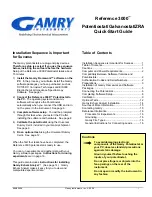
Manual rEvo III
10
The output pressure of the regulator is depth
independent (“Absolute Pressure Regulator”
(APR)).
The orifice is situated in the exhale lung and
is easily accessible for maintenance. On the
outside of the orifice a non-return-valve
(one-way-valve) is mounted to avoid dirt,
moisture or dust, coming from the exhale
lung, and which could possibly enter the
orifice.
!!!!!!!!!!!!!!!!!!!!!!!!!!! picture rMS tray
2.5 The scrubbers:
The scrubbers take care of the “removal” of CO2 from the exhaled gases.
The rEvo has a unique dual scrubber-system consisting of two serially mounted
scrubbers. During diving, gas flows from the upper scrubber to the lower scrubber.
This configuration has some important advantages: it allows a compact rebreather
design, low work of breathing resistance and a higher safety level.
•
Compact design: using two scrubbers with a large diameter and low height,
results in a limited total thickness of the rebreather (maximum 180 mm at the
point where the rebreather is in contact with the back of the diver). This design
ensures
a
perfect
streamlining
of
the
diver
during
diving.
•
Low internal breathing resistance: mounting the scrubbers directly on the lungs
in the body of the rEvo, results in reducing restrictions in gas flow to a
minimum. Most non rEvo-rebreathers have their lungs and canisters connected
by tubes or hoses of 30 mm or even less. The rEvo scrubbers are connected to
the lungs through an opening of 154 mm diameter, resulting in an extremely
low
WOB
(work
of
breathing)
in
a
normal
diving
position.
•
Increased safety while using the rebreather: during diving, condensation is kept
in the lungs without affecting the scrubber, both in horizontal and vertical
position. The risk of channelling is reduced significantly when using two
canisters compared to a normal single radial or axial canister.
2.6 Backplate, Wing & Harness:
The rEvo uses an ergonomic split back-plate, a harness and a wing BCD.











































